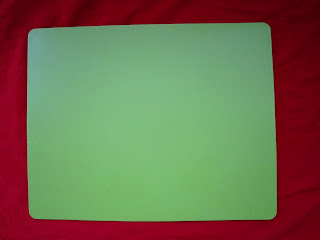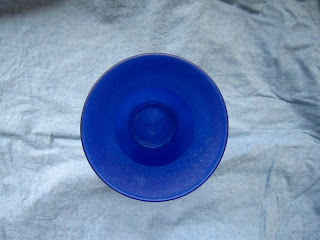These are as close to the actual colours as my printer would allow!
I amanaged to find my leafy green in the form of a plastic cutting mat
My orange was very close to the inside of a silicon oven glove
My violet was almost a dark blue but I found a close colour in this vase.
I chose a sky blue for my blue and this River Island bag was almost exact.
I struggled finding a yellow as most of the yellows I found were really bright and saturated whereas I wanted a more pastel like colour, this vase is close but a little too desaturated.
The red I chose seemed to be everywhere, I don't know if this was down to my printer or if I picked a very common red it seemed to match to most red objects!
Contrast of Tone
I took pictures of all my objects on a plain white background to see which ones have a higher contrast of tone.
The red is very distinct against the white background
The blue and green have very similar tonal values
My deep purple is almost black against the white background
The yellow almost blends in with the white as the tonal values of the two colours are similar.
Contrast of Hue
I kept the light source constant when taking these pictures to see how juxtaposing two different hues of colour affects each other.
Contrast of Saturation
Putting the red hole punch next to this more crimson red makes it look orange in comparison.
Whereas putting it next to this red translucent fluid in a lava lamp makes it look very red.
My orange glove looks very yellow in comparison to a highly saturated orange.
CONTRAST OF PROPORTION
Looking at these proportion contrasts next to each other, the photos where the colour is dominant is quite difficult to look at, I find that it's much easier to look at the image with more white space.
CONTRAST OF TEMPERATURE
Hot temperature constant colour:
The hot red stapler blends in with the hot colour
There is some activity between these two colours because they are very different in terms of hue and temperature.
There is even more movement at the boundaries of this violet vase with both colours fighting for dominance.
Cool colour constant:
The warm red stands out a lot more against a cool colour.
COMPLIMENTARY CONTRAST
I found this vivid complimentary contrast in my flat kitchen, you can see an active relationship between the two colours fighting to be at the front, it's hard to tell if the red is standing out in the picture or sinking into it.
Here are the complimentary contrasts of my objects:
Because the oven glove is silicon it is reflecting a lot of light which is making it less orange than it is.
SIMULTANEOUS CONTRAST
I boosted the brightness and contrast to emphasise the activity at the boundaries of the colours:

































































No comments:
Post a Comment